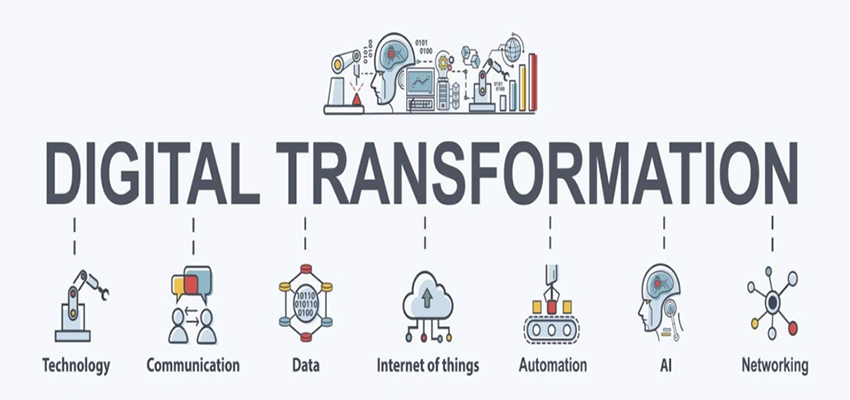Handling and Analyzing Big Data: A Professional Guide
 Javed Ahmed
Javed Ahmed
Introduction
In the digital era, organisations and businesses swim into a sea of massive data from various sources. If well managed and analyzed, this data, referred to as Big Data can afford the user a lot of insights. However, the handling of such vast amounts of data presents its problems. This guide shall look further at the approaches used to manage big data, the tools needed in big data management, and the strategies that must be adopted to handle its big data correctly and make the right and timely decisions.
Understanding Big Data
The Five Vs characterize Big Data:
Volume: The growth of big data is being produced around the world.
Velocity: A factor related to the rate of data generation or the rate at which data has to be analysed.
Variety: The formats that can be accommodated in big data systems, from the well-formatted and ordered data (databases) to disorderly formats like videos, tweets, etc.
Veracity: Contacts made for data collection were well coordinated, well timed, and effective to ensure that the data collected was accurate and reliable.
Value: Big data is aggregating large volumes of data that are impossible to process using traditional tools to make conclusions.
Some examples of big data sources are the Internet of Things, Mobile and social applications, Transactional systems, weblogs, and several others. The problem is not only being able to store such quantities but also making them fast enough for analysis to generate real-time information.
Main Issues in Big Data Analytics
Data Integration: Integration of data gathered in different formats (relational, semi-structured, and non-structured).
Scalability: Since the data volume continues to increase, there is a need to manage large data volumes with scalability.
Data Governance: It ensures Data privacy and security and complies with various Data protection laws, such as the General Data Protection Regulation (GDPR) and the California Consumer Privacy Act (CCPA).
Real-time Processing: Streaming data analysis to generate real-time responses for applications that require time-sensitive computation, such as credit card fraud detection or recommendation of products to specific customers.
Technologies for Addressing Big Data
Several tools and technologies have been developed to address the aforementioned issues of big data. These can range from simple shelving to elaborate processing architectures.
- Distributed Storage Solutions
Hadoop HDFS: A distributed file system designed for scalable data sets in clusters of computers or ‘machines’.
Amazon S3: It defines a swift appendage cloud storage system that responds to increasing data volumes.
- Data Processing Frameworks
Apache Hadoop: The core technology of large-scale data environments known as MapReduce – the programming paradigm for processing large amounts of data with distributed computations.
Apache Spark: As a workhorse for machine learning, Spark is significantly faster than Hadoop because it employs in-memory processing.
Flink & Storm: Live data processing solutions are applicable for applications with low response time requirements, such as in financial markets or analytics.
- NoSQL Databases
Relational databases, in particular, have issues with unstructured data and big data. Some examples are MongoDB, Cassandra, and HBase, which deal with unstructured or semi-structured data more than structured data.
- Cloud Computing
Cloud solutions by key players like Google Cloud Platform, Microsoft Azure, and AWS provide organizational infrastructure at much smaller scales than traditional, large data centers that organizations would have to sustain themselves.
Data Analysis Techniques
Therefore, after storing and processing data, the next significant step is to analyze the collected data. Big data analytics is not an everyday practice but is grounded in advanced methods.
- Predictive Analytics
Machine learning models can also predict trends, behavior, or outcomes in the future based on historical data. For instance, market vendors employ perceptual mapping, which is part of predictive analytics, in their demand forecasting.
- Machine Learning (ML)
The ML algorithms enable the system to learn from examples, so the system's functioning is modified as a result of continuously changing conditions. Examples include clustering for customers, classification for fraud, and regression for prices.
- Deep Learning
In tasks such as image recognition, speech processing, or natural language understanding, deep learning models—a category of ML—have a competitive edge owing to their ability to independently look for patterns in data.
- Natural Language Processing (NLP for short).
NLP means the ability of systems to read and understand human language and helps businesses maintain and analyze text data such as customer reviews or social media posts.
- Data Visualization
Using figures and charts to present the data makes it easier for the people in authority to process what is being presented to them. Frameworks such as Tableau, Microsoft Power BI, and D3.js are considered in the development of IDV and VA.
Managing Big Data and Possibilities and Challenges.
Scalable Infrastructure: It is important to always make your infrastructure scalable to expand or shrink depending on the incoming data.
Prioritize Data Governance: Implement adequate data governance policies to enhance data quality and security and accredit compliance with regulatory authorities.
Leverage Automation: Data pre-processing powers should also be automated to facilitate that data ingestion, cleaning, and analysis should be quick and not involve the likelihood of errors being made due to human intervention.
Focus on ROI: Nothing of this kind is not capable of being choke-sullied. The emphasis should be on extracting the patterns that are likely to result in business decisions and yield the greatest ROI.
Conclusion:-
Realizing big data project algorithms and statistical methods, deploying concrete techniques for data management, and excellent planning of the big data project call for the use of integrated technologies. Thus, organizations should apply the right methods and approaches to fully address big data to create new opportunities for innovation and effectiveness in their fields of activity. If big data is to be harnessed sufficiently, it must be done prudently and expertly through predictive modeling, analytics, or deep learning.
By adopting best practices and chief technology, firms manage disparate Data Science and AI Course on opportunities and threats to turn them into insights to become more competitive and capable in the new digital environment.
Subscribe to my newsletter
Read articles from Javed Ahmed directly inside your inbox. Subscribe to the newsletter, and don't miss out.
Written by
